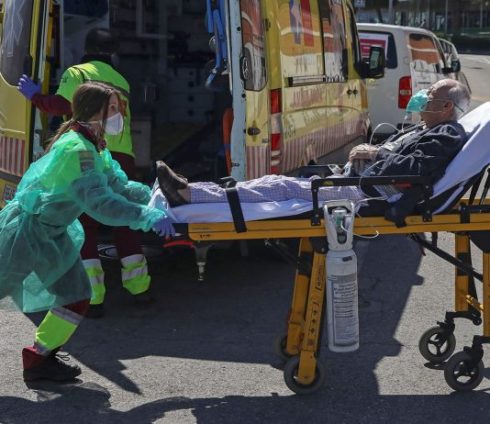British Transport secretary Grant Shapps has announced that travel abroad will be permitted from as early as May 17.
‘I’m not advising against booking summer holidays,’ he said on Friday, giving a glimmer of hope that it may soon be possible for Brits to plan a trip abroad.
What we know so far is that overseas trips will be allowed under a ‘traffic light’ country classification scheme with different requirements for each category depending on the risk.
- Green countries will not require a mandatory quarantine, although pre-departure Covid tests will be necessary and a further test when back.
- Amber nations will need a ten-day return quarantine, a pre-departure Covid test and two tests on return.
- Red-listed countries will require you to pay for ten days in a ‘quarantine hotel’ on return (£1,750), plus a pre-departure test and two others on return.
But which countries will be classed ‘green’?
The big question is whether Spain will fall into the ‘green light’ category which would see the country open up to tourists from the UK and could save Spain’s summer tourism season.
Brits make up the biggest proportion of foreign tourists to Spain with some 18 million visiting the country in 2019, the year before coronavirus pandemic hit.
But they are unlikely to come in the same numbers if they have to endure compulsory quarantine on return from their holiday.
Schapps said the list of countries in each category will not be announced for several weeks, but will take into account infection rates, variants prevalence and access to genomic sequencing, as well as vaccination rate.
Based on what we know now, it seems that unless there is a drastic change in Spain, it is unlikely to make the initial “green list” because it’s vaccination programme is so far behind the UK’s.
The latest data shows that on April 8, Spain had vaccinated just 15.1% of the population with one dose of vaccine – either Pfizer, Moderna or AstraZeneca. While a mere 6.5% were fully inoculated with two doses.
On the same date 60.6% of the population in the UK had received a single dose and 12.4% had received both.
Coronavirus infection rates right now are also much higher in Spain than in the UK. On April 6 the UK registered a cumulative incidence rate of 29.9 per 100,000 people over a seven day period while in Spain the national average was 90.79 per 100,000 people and rising. However, we know these trends can change quickly.
But if the UK were to distinguish between different parts of Spain then holiday spots such as the Balearics and Canary Islands, where infection rates are much lower, could open up ahead of the mainland.
This is what Germany has done, with six regions in Spain, including the Balearic Islands and Valencia region, considered low risk.
However, there is a glimmer of hope that the UK may make it easier for people who want to go abroad to visit family, even if holidays in Spain are still off the cards.
Mr Shapps also said he was concerned about people who were separated from family members living overseas, saying it was “possibly even more pressing than the holiday issue”.
He said families in the UK were “uniquely spread across the world”, and the government wanted to make sure people were able to reunite.
READ ALSO:
- REVEALED: The contrasts between UK and Spanish rules for foreign travel and who has the final say
- ‘Fury’ at Spain’s Alicante Airport as 40 Brits deported back to UK after flight from Manchester
- EXPLAINED: What expats need to do to get Covid-19 vaccine in Spain











